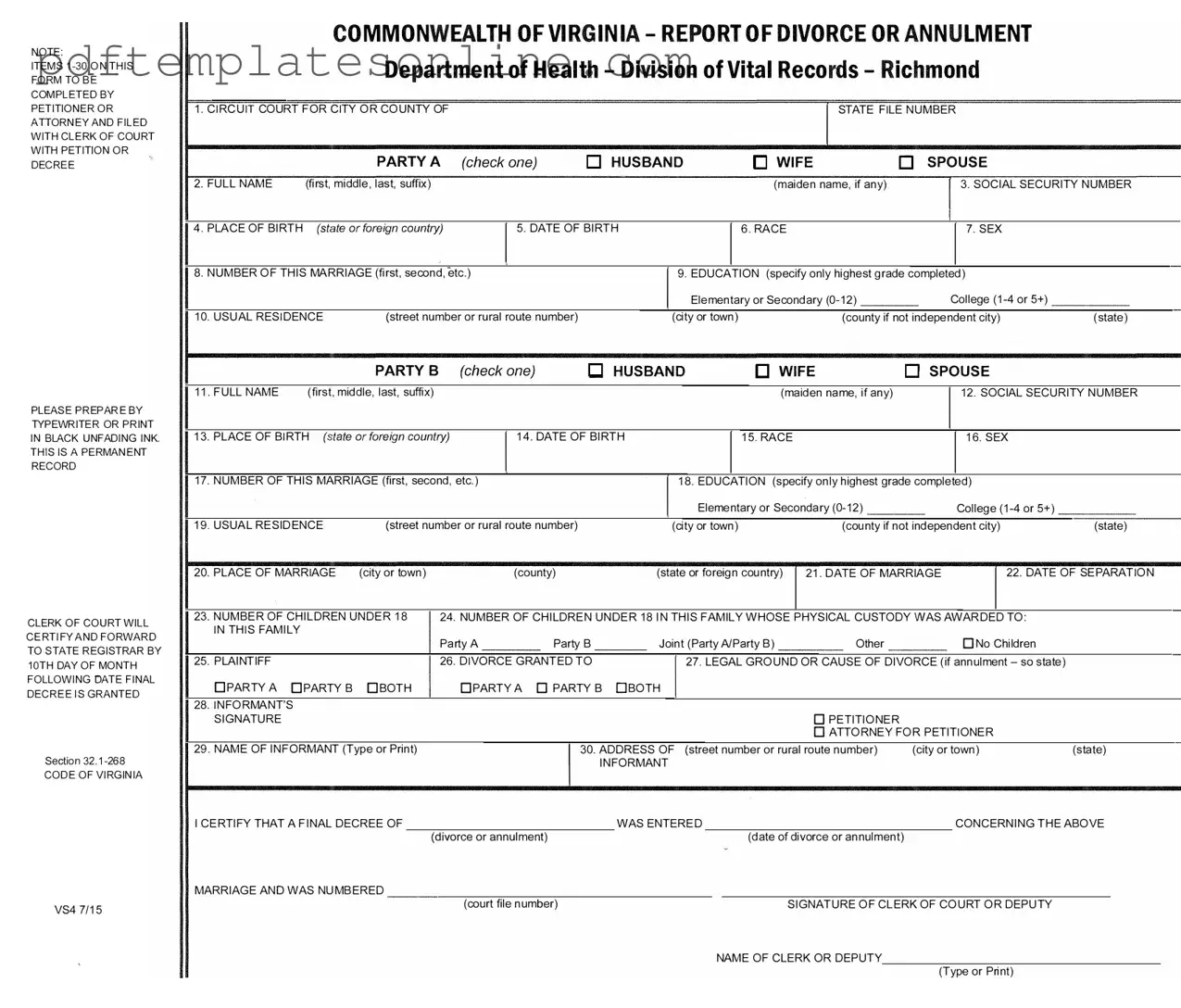Filling out the VS 4 form correctly is crucial for a smooth divorce or annulment process in Virginia. However, many individuals make common mistakes that can lead to delays or complications. Understanding these pitfalls can save time and frustration.
One frequent mistake is failing to provide complete and accurate personal information. For instance, omitting a middle name or using an incorrect suffix can lead to discrepancies in official records. It is essential to ensure that all names, including maiden names, are entered correctly. This not only applies to the petitioner but also to the other party involved.
Another common error involves the Social Security numbers. Many people either forget to include this critical information or enter it incorrectly. This number is vital for identification purposes and must be accurate. Double-checking this section can prevent unnecessary issues down the line.
People often neglect to specify the correct number of the marriage. Whether it is the first, second, or third marriage, this detail is significant for record-keeping. Incorrectly stating the number of marriages can complicate the legal process and may lead to additional scrutiny from the court.
Education level is another area where mistakes frequently occur. Individuals sometimes provide vague descriptions or fail to select the appropriate options. The form requires specific information about the highest grade completed, and providing this accurately is essential for the records.
Additionally, many applicants overlook the importance of the date of marriage and date of separation. These dates must be precise, as they are used to determine the timeline of the divorce proceedings. Misstating these dates can lead to misunderstandings and may affect the outcome of the case.
Lastly, failing to sign the form is a surprisingly common mistake. Some individuals may forget to include their signature or the signature of their attorney, if applicable. This omission can render the entire application invalid, resulting in delays in processing.
By being aware of these common mistakes and taking the time to review the form carefully, individuals can ensure a smoother experience when filing for divorce or annulment in Virginia.
